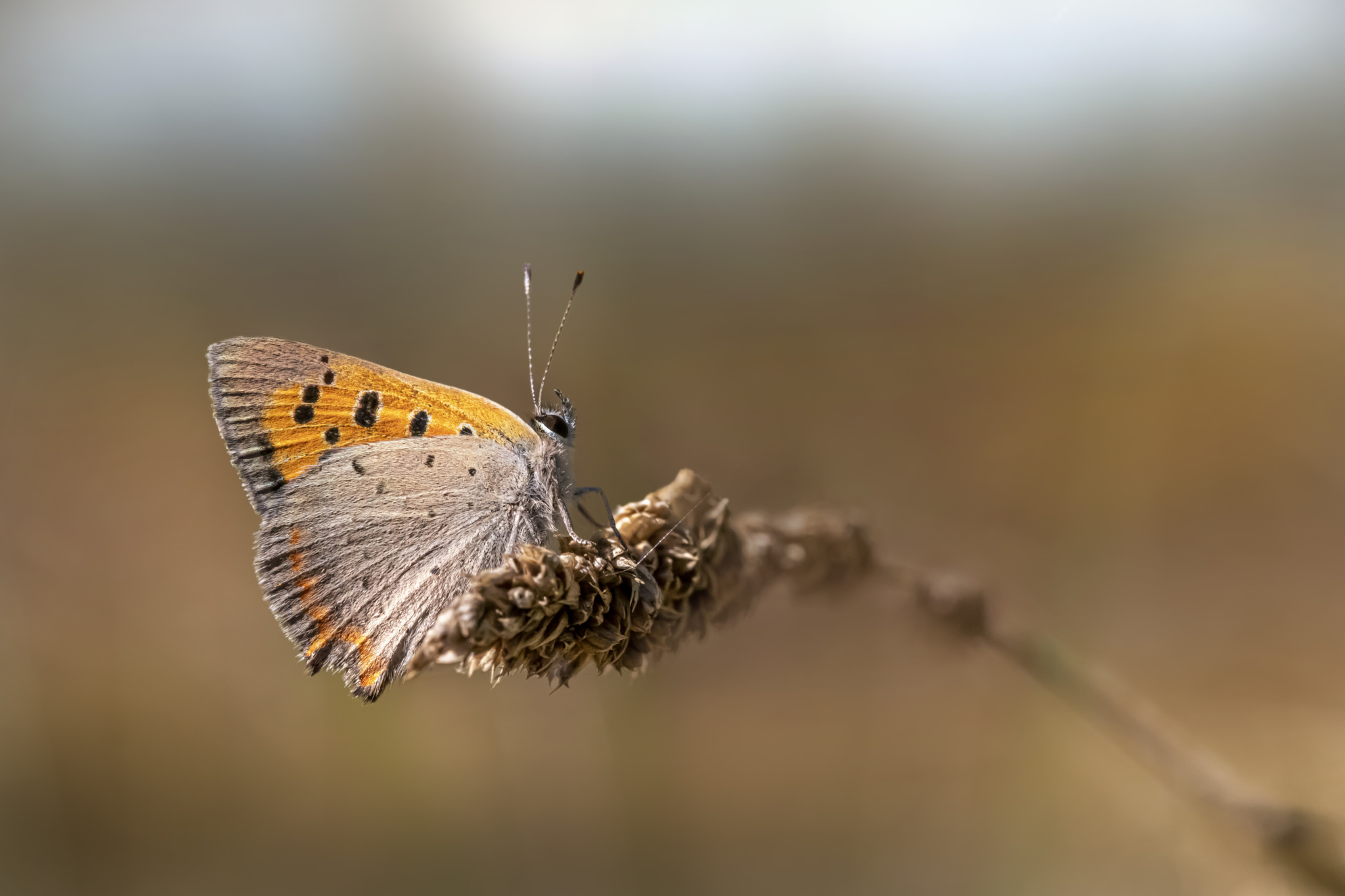TDeep Overview: Small Copper (Lycaena phlaeas)
The Small Copper (Lycaena phlaeas) is a vibrant, fast-flying butterfly found across Europe, North Africa, Asia, and North America. It is known for its bright orange wings with black spots, compact size, and aggressive territorial behavior. Despite its delicate appearance, this butterfly is highly adaptable and can thrive in varied habitats.
Taxonomy & Classification
- Kingdom: Animalia
- Phylum: Arthropoda
- Class: Insecta
- Order: Lepidoptera
- Family: Lycaenidae (Blues, Coppers, and Hairstreaks)
- Genus: Lycaena
- Species: Lycaena phlaeas
- Common Names:
- Small Copper
- American Copper (in some North American populations)
Physical Description
- Wingspan: 22–35 mm (0.87–1.38 in)
- Coloration & Markings:
- Upperwings:
- Bright orange with black spots
- Dark brown borders
- A subtle blue dusting near the hindwing edges (in some individuals)
- Underwings:
- Pale brownish-gray with small black spots
- Orange band along the hindwing edges
- Upperwings:
- Key Features:
- Small size but highly noticeable due to its bright colors
- No sexual dimorphism—males and females look similar
Distribution & Habitat
- Geographic Range:
- Found across Europe, North Africa, temperate Asia, and North America
- Also present in Japan and parts of Central Asia
- Preferred Habitat:
- Heathlands, grasslands, meadows, coastal dunes, gardens, roadsides, and urban parks
- Prefers dry, sunny areas with low-growing vegetation
- Thrives in both wild and disturbed habitats
Behavior & Adaptations
- Territorial & Aggressive:
- Males are highly territorial and will chase off other butterflies, bees, and even larger insects
- Strong, Fast Flight:
- Flies in quick, darting patterns
- Sun-Loving Species:
- Frequently basks in sunlight with wings open
- Multiple Generations Per Year:
- In warm climates, can produce 2–3 generations annually
Diet & Feeding Habits
- Caterpillars (Larvae):
- Feed mainly on sorrel and dock plants (Rumex species)
- Adult Butterflies:
- Nectar feeders, preferring flowers like thistles, daisies, clover, and dandelions
- Feeding Strategy:
- Often seen nectaring with wings open to absorb sunlight
Reproduction & Life Cycle
- Breeding Season:
- April to October (varies by region)
- Egg-Laying:
- Females lay eggs on the underside of sorrel and dock leaves
- Caterpillar Stage:
- Green with a slightly flattened body
- Resembles a tiny, segmented slug
- Pupation & Overwintering:
- Overwinters as a caterpillar or pupa
- Pupation occurs low in vegetation or on the ground
- Lifespan:
- Adults live 2–3 weeks
Predators & Threats
- Natural Predators:
- Birds, spiders, predatory insects (e.g., wasps and ants)
- Human-Related Threats:
- Habitat destruction due to intensive farming and urbanization
- Overuse of herbicides, reducing host plants
- Conservation Status:
- Least Concern (LC) but declining in some areas due to habitat loss
Ecological Importance
- Pollinator:
- Helps pollinate wildflowers and crops
- Part of the Food Chain:
- Caterpillars and adults provide food for birds, reptiles, and predatory insects
Relationship with Humans
- Common in Gardens & Parks:
- Frequently seen visiting nectar-rich flowers
- Indicator of Habitat Health:
- The presence of Small Coppers suggests a healthy ecosystem
- No Agricultural Impact:
- Larvae feed on wild plants, not crops
Fun Facts
- Males aggressively defend their territory, often perching on a prominent leaf or rock
- Females are selective in choosing egg-laying sites, ensuring the best conditions for their offspring
- Despite their small size, they are feisty butterflies, often engaging in aerial battles
- One of the few butterfly species capable of multiple broods per year in warm regions
Conclusion
The Lycaena phlaeas is a small but striking butterfly known for its fiery orange wings, territorial nature, and adaptability. Thriving in meadows, gardens, and coastal areas, it remains a common sight despite challenges like habitat loss. Conservation efforts focused on preserving grasslands and wildflowers will help ensure its continued success.
Views: 618
Subscribe to the newsletter:
